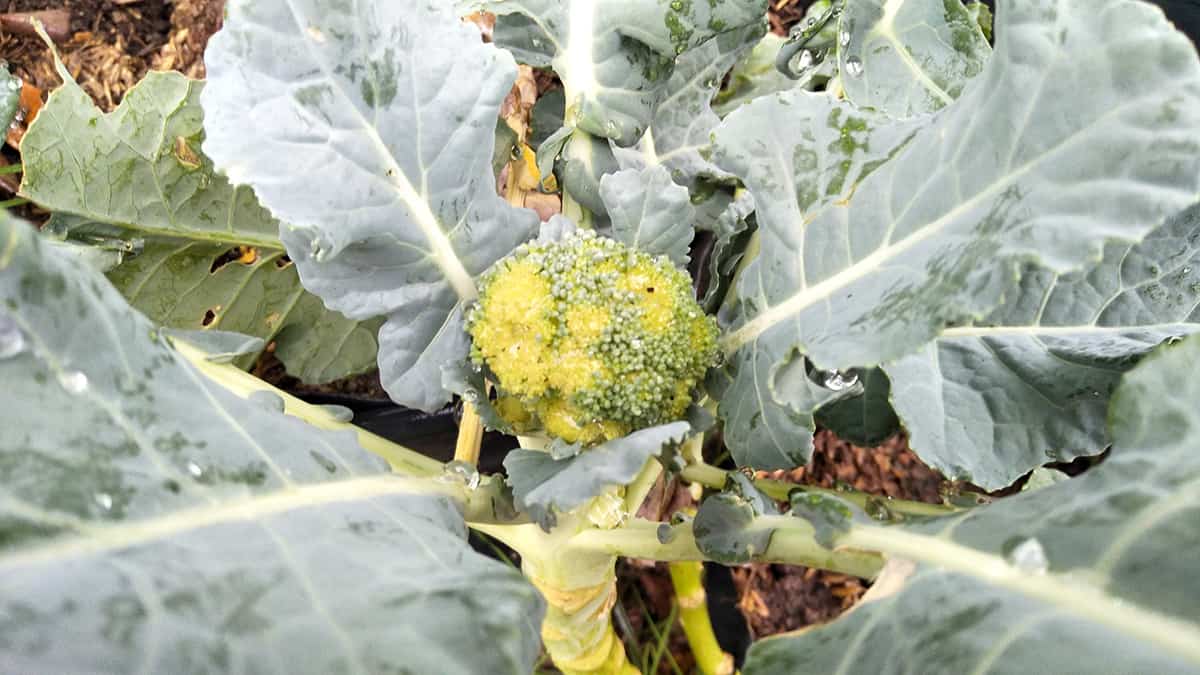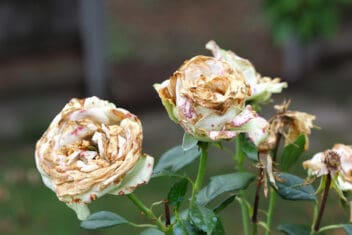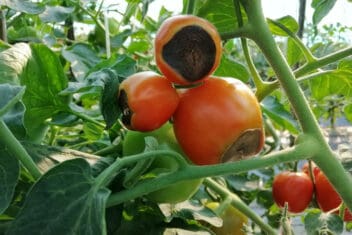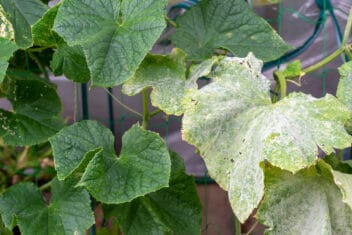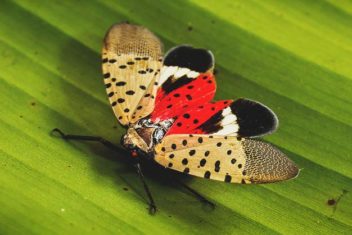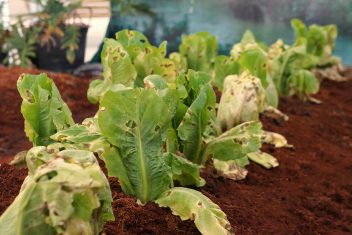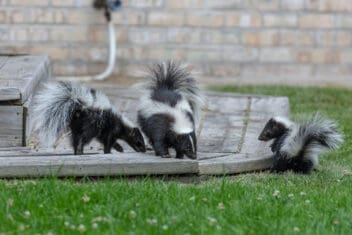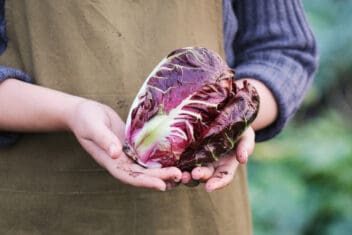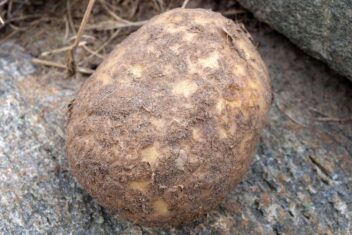Broccoli is a delicious, easy-to-grow favorite. Except when it isn’t easy to grow at all. Like radishes, cucumbers, and cabbages, broccoli is one of those vegetables that’s usually easy to succeed with. When you have problems, you’re left flipping through gardening books while well-meaning authors offer variations of “anyone can grow broccoli.”
Nothing feels more like a failure than the reminder that your failing crop is often called a “no fail” vegetable.
The truth is, any vegetable can fail given the wrong circumstances. Even easy-to-grow favorites like broccoli will lose to ingenious rabbits or overworked soil.
Broccoli Basics
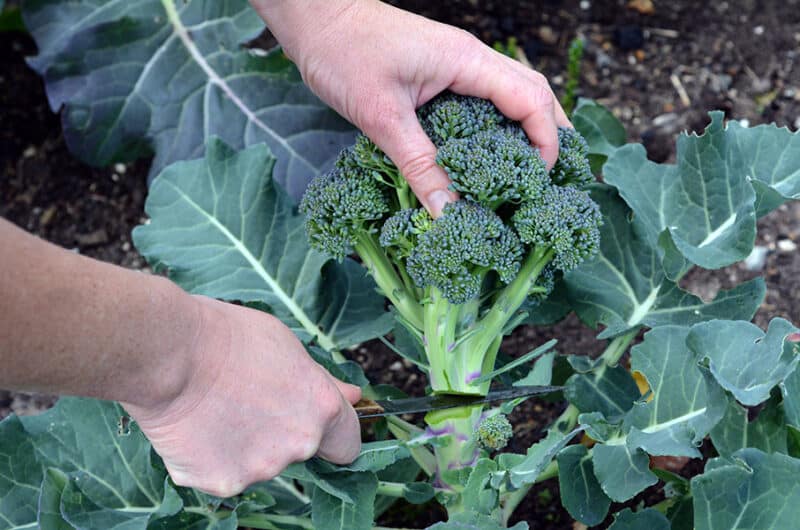
Broccoli is one of the most popular members of the brassica family. It’s a cool-weather vegetable – growing best in spring and autumn weather. Like its close cousin cabbage, broccoli grows best when it’s given the chance to grow quickly in cool weather with plenty of moisture.
With plenty of moisture and rich soil, broccoli is an easy plant to grow. But there are always challenges when gardening – it’s one of the joys and challenges of working with the natural world.
Whether your challenge is an unseasonably hot spring, a garden full of cutworms, or disturbing black spots on the leaves of your plant, you’ll find answers – and no judgment – here.
There are two primary types of problems with any vegetable including broccoli: pest problems and health issues. Broccoli is no exception. If you’re losing plants at any stage of growth, it’s a good idea to figure out whether the problem is a pest or an issue with the health of the plant itself.
Brassicas are visited by a lot of pests. Humans have been growing broccoli, cabbages, and other members of the brassica family for millennia. Naturally, some pests have become as attached to these hearty, nutritious vegetables as we are.
Pests aren’t the only potential threats to your broccoli harvest. There are a few fungi and diseases that can destroy this crop as well. But if you’re attentive and take preventative measures, it’ll be easy to keep your broccoli crop healthy and growing strong.
The sooner you know what is going wrong, the sooner you can correct the problem.
1. Seedlings Cut Off at the Base
One of the most persistent broccoli pests is the indiscriminate cutworm. This gray grub just loves eating seedlings. Cutworms munch the roots, stems, and eventually leaves. They won’t just eat your broccoli either – cutworms will cheerfully devour most of the garden if you let them.
The easiest way to stop cutworms is by penning your chickens in the garden right before planting. Chickens love cutworms as much as cutworms love seedlings. They’ll scratch around and find every grub in the garden. But remember to get the hens out before planting, because chickens love to scratch up seedlings too.
If you don’t have chickens, put a paper collar around the base of each seeding and sprinkle wood ash around the base of your plants to keep the grubs at bay. Our guide to cutworms has more helpful tips.
2. Seeds Don’t Germinate or Seedlings Disappear
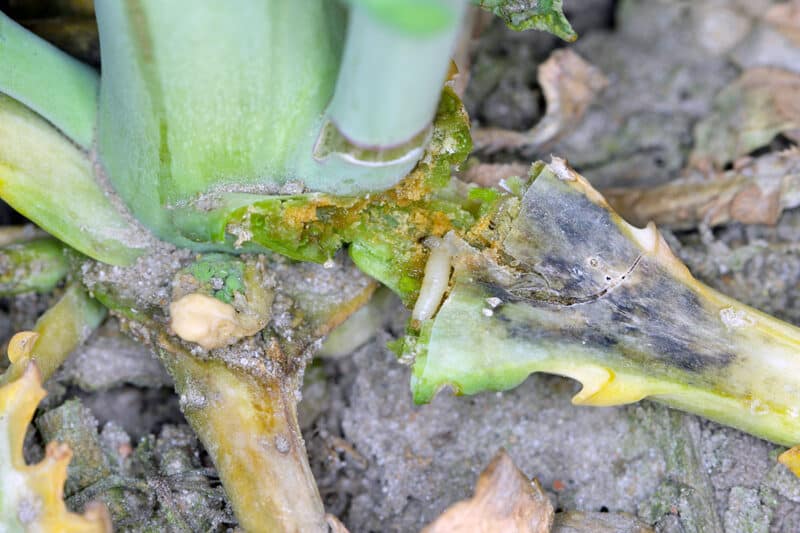
This grayish-white monstrosity is the immature version of the cabbage fly. Despite his name, the cabbage fly loves broccoli. In fact, he’ll eat anything in the brassica family – arugula, brussels sprouts, cabbages, and broccoli. When seedlings fail to emerge from the soil or disappear altogether both cabbage root maggots and cutworms are suspect. When full-grown plants also develop slimy tunnels in the roots, you know cabbage maggots are probably to blame.
Fortunately, you can get rid of the broccoli problem of cabbage maggots the same way you’d eliminate cutworms. Paper collars, wood ash, and chickens. If last season was a bad broccoli season for you, try all three remedies.
3. Yellowing or Weak Plants
The bane of every gardener, aphids are tiny, soft-bodied insects that feed on a variety of plants. You’ll find them on the undersides of your broccoli leaves. When aphids feed, the broccoli leaves become discolored and wrinkly.
They can do a lot of damage but getting rid of aphids is usually pretty easy. A basic insecticidal soap is ideal for killing off even a large-scale aphid infestation. For smaller invasions of aphids, just spray them with a strong hose to knock them off the plants.
4. Chunky Holes in Foliage
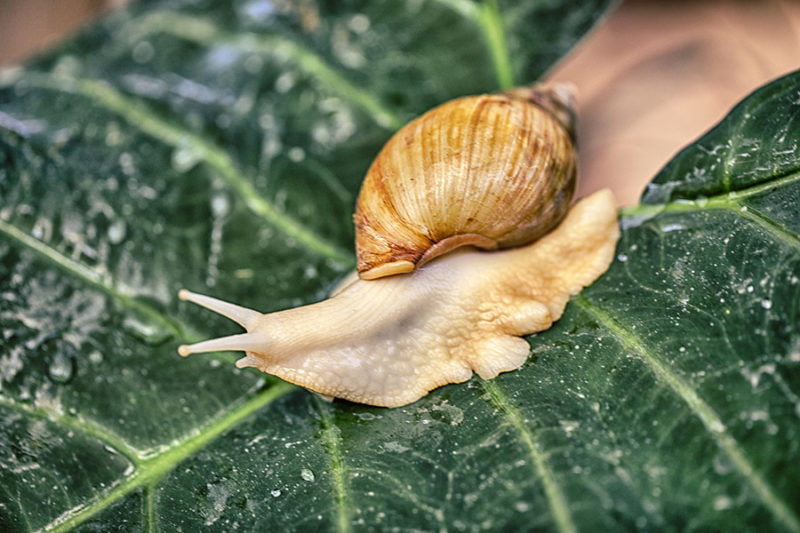
Slugs love brassicas. You’ll find them oozing along your broccoli rows especially at night. They devour leaves and leave the whole plant slimy. But slugs also love beer, and like most of us, if they have to choose between broccoli and beer, they’ll go for the beer. Build a few beer traps in your garden – especially near your brassicas – and the slugs will leave your veggies alone and head for the beer instead.
Remember to change your beer traps regularly. They can quickly fill up with downed slugs, leaving other slugs the chance to enjoy a few sips of beer before filling up on broccoli leaves. Traps only work if the slugs can’t escape from them.
5. Leaves Missing Entirely
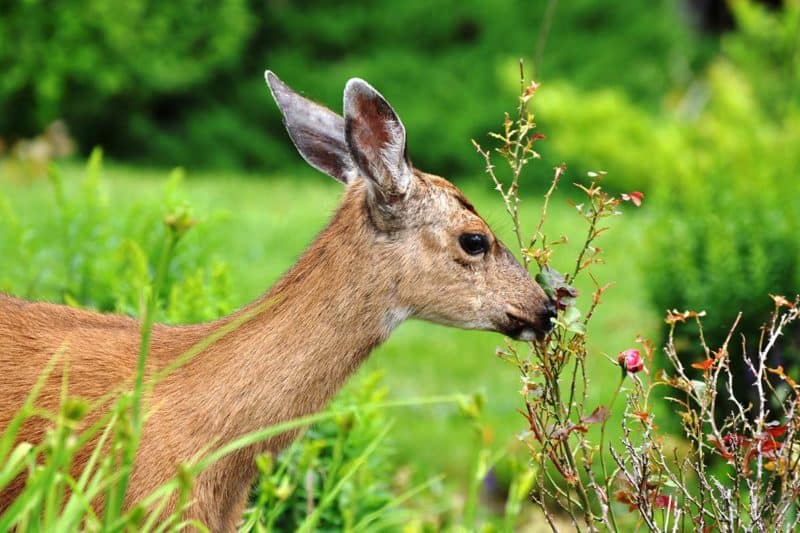
Insects aren’t the only problems that impact your broccoli. Rabbits, groundhogs, birds, and even goats tend to go for brassicas first when they invade the garden. Solid fencing is the only defense against goats that I’ve had any success with, but you have more options when it comes to smaller animals.
One year, a groundhog came and ate all of my cabbages and broccoli. He ignored everything else in the garden. I planted new brassicas, but the greedy, little pest came back and ate all the new brassicas as well. Broccoli pests are persistent.
Try spraying each plant with a natural repellent like Liquid Fence or a homemade cayenne and garlic deterrent.
6. Seedlings Are Weak or Seeds Don’t Emerge
Dampening off can strike any plant, but it happens most often to young seedlings. If you see your young seedlings collapse with black, wet stems, they’re suffering from dampening off. Make sure the humidity doesn’t get too high and give your young plants plenty of bright sunshine (or a grow light). Dampening off is a fungus that grows in cool, dim, moist places.
Since my house is always a bit cool and dim in early spring – I bring my seedlings outside in a cold frame as often as possible and water them with a weak, oregano tea to combat fungi.
7. Brown or Yellow Spots
If you’re starting to see brown or yellowish spots on the tops of your leaves and powdery mold on their undersides, it’s likely your broccoli plants are suffering from the problem of downy mildew. Another fungus that lives in damp soil, downy mildew can quickly overwhelm a row of broccoli.
Often, the problem is air quality and circulation. Maybe your plants are too closely spaced? Open up the rows a bit to give the air a chance to move. Pull weeds, mix a little wood ash into the soil, and give that patch of garden a break next year. If the downy mildew is persisting,
8. Mushy Black Spots
Unfortunately, this one can’t be cured. If the Erwinia bacteria attacks your plants, the leaves and head will turn pale green, and then slimy rot will start at the stem and engulf the whole plant. Water-soaked, black, mushy spots will appear everywhere and ooze will seep out of cracks along the stem. It sounds like a horror story doesn’t it.
When bacterial rot hits, all you can do is gather up your broccoli plants and burn them. Don’t throw these plants in the compost, or the rot will take root there as well. Then, work on the soil. Improve drainage, add healthy compost, wood ash, and leave that spot fallow for a year. Rotate your crops when you do plant again – avoiding brassicas for another year at least.
9. Flowering
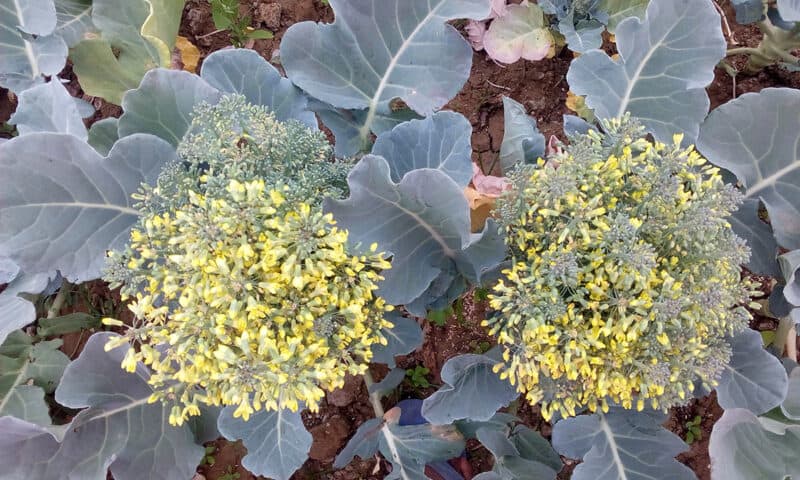
What if your plants look fantastic, but they just aren’t producing a head of broccoli. The leaves look healthy, there’s no rot or damaging insects, and you’re positive the goats aren’t sneaking in to steal the head as it forms. What’s going on?
If your plants suddenly burst into flower, without producing a head, it’s likely the temperatures are just too hot. Try to plant broccoli so that the plants can reach maturity before temperatures hit 80-85°F. Temperature issues are a major cause of problems with broccoli.
A drought can also cause the kind of stress that causes broccoli to bolt. Broccoli loves full sun, cool temperatures, and moist, rich soil. If mother nature fails to provide any of these things, the plant starts to worry. So, instead of building a head of broccoli, it simply bursts into flower, hoping that the next generation will have a better chance to grow.
10. No Head at All
Perhaps your broccoli plants aren’t even flowering. If that’s the case, there’s probably a root issue problem at play with your broccoli. The plants might be overcrowded. If the plants aren’t able to stretch their roots and absorb enough nutrients from the soil, then they won’t be able to form a head properly.
If your broccoli plants are root-bound in pots, or if their roots are damaged from careless transplanting, then you might just end up with a row of broccoli leaves and stems at the end of the season. It’s disappointing, but at least the whole plant is edible.
Too much heat as the plants are forming can also cause the plant to bolt rather than forming a head.
11. Seedlings Collapse When You Move Them Outside
Uh oh! You didn’t harden your plants off well enough. When you start a plant indoors and move it outside, you need to do it gradually over a week to two. If you don’t, the shock will kill or stunt your plants.
